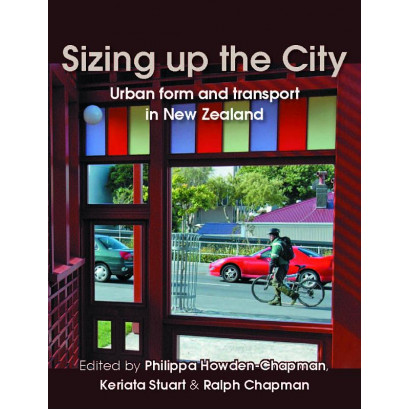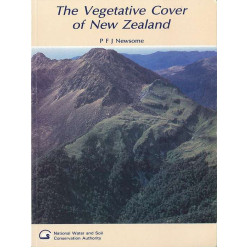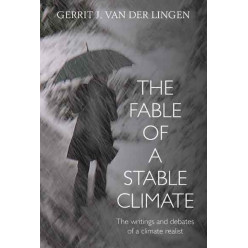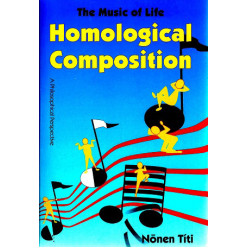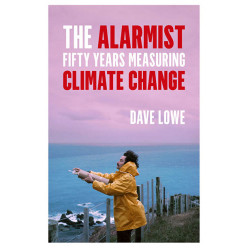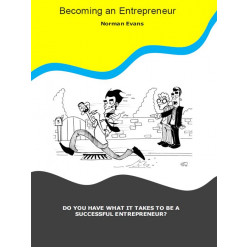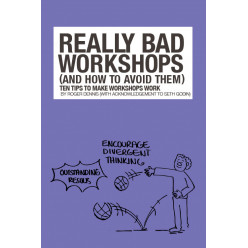Sizing up the City: Urban form and transport in New Zealand
Immediate Download
Download this title immediately after purchase, and start reading straight away!
View Our Latest Ebooks
Explore our latest ebooks, catering to a wide range of reading tastes.
Sizing up the City: Urban form and transport in New Zealand collects and expands on papers presented at the New Zealand Centre for Sustainable Cities’ 2009 national symposium on sustainable transport and our built environment.
Contributors explain how public and private transport form part of our culture, how they interact with urban centres, and how they affect our lives – our health and our social wellbeing. Research shows the challenge we face in making our transport networks resilient and sustainable, and the contributors to this book suggest how we might start that task.
From: Sizing up the City, edited by Philippa Howden-Chapman, Keriata Stuart and Ralph Chapman
Ralph Chapman & Philippa Howden-Chapman
People move about our cities in many ways. Babies are pushed around in buggies, people with disabilities propel themselves around in electric wheelchairs. People walk or ride bicycles; others catch public transport – buses, trams or trains. Many people rely on carbon-based fuels to power the technology that moves them about: they take their own cars. To support the ‘just-in-time’ delivery system, drivers move goods all over our cities many times a day in light vans. Heavy truck drivers take goods to and from the ports and airports. All this movement adds up to a complex and growing web of activity. This book looks at the impact of this transport activity on New Zealand cities, how people view the urban fabric they live in, and our cities’ resilience. A central theme running through the analysis is: What are the hidden costs of vehicle transport in cities, what are the co-benefits of more sustainable forms of transport, and can we adapt the form of our cities to provide more sustainable transport solutions?
Most New Zealanders live in urban areas. With the falling cost of transport, our cities now sprawl over the green belts set up in the 19th century by our far-sighted forebears, and spread into the suburbs. Cities have been shaped by the way people arrive in and move around them. They have co-evolved with changing transport technologies. Different types of transport – waka, boats, walking paths, roads, tramlines, railways and airports – have moulded our cities in distinctive ways. Infrastructure investment decisions by local and central government continue to influence land use and the built environment.
As people work with this transport legacy, they have to adapt to new challenges. Emerging issues span the environmental, social and economic range, from climate change to rising energy prices, the health issues associated with lack of exercise, and keeping our cities economically competitive. While these are major issues, and there are wide differences of view about policy solutions, there are also some strong emerging themes and conclusions. One of them is that smart solutions for tomorrow’s cities should involve placing considerable weight on the cobenefits of active modes of transport, such as walking and cycling. These modes will not work in all circumstances, but they offer a great deal where they can be adopted, expanded and integrated with increased use of public transport.
Another emerging conclusion is that we can and should make our urban areas more resilient – resilient to, for instance, the economic and social adjustment that climate change policy and climate change itself will bring. There are strong, mutually reinforcing reasons for ensuring they become so. For example, instead of building more roads, which reduce resilience by further encouraging urban spread and fossil fuel use, we could reshape the roads we have, incorporating safe cycleways at the side and separating them from the roads by footpaths, while helping people to ‘level board’ buses and light rail with greater safety and speed. We could also make a step change in the use of public transport, by subsidising it more heavily, recognising its multiple benefits. Cities overseas have tried free or concessional public transport with considerable success. Another strategy is to encourage greater density and diversity of land use at urban ‘nodes’, so that people and goods can have greater ‘access’ (to other people and goods) with less physical mobility, thus saving on carbon dioxide emissions and reducing vulnerability to future oil scarcity. Such ideas are examples of the creative thinking that will be vital if we are to find workable solutions in the transition to a low-carbon, resilient society and economy.
This book brings together the ideas floated in two summer schools held by the New Zealand Centre for Sustainable Cities in 2008 and 2009. The presentations given there have been re-worked by their authors to include points raised in the discussion, and more recent research. The book also includes several additional chapters by urban researchers associated with the Centre. It reflects an ongoing partnership with urban stakeholders, particularly New Zealand’s regional and local councils, to strengthen urban sustainability.
The effect of urban form on travel
Reid Ewing poses a critical question about the plasticity of urban form and carbon dioxide (‘carbon’) emissions. He asks, in the US context, what reduction in vehicle miles travelled (VMT1) is possible with compact urban development rather than continuing urban sprawl? And what reduction in carbon emissions would accompany such a reduction?
Ewing and colleagues present quantitative research showing clearly that as more roads are built, more vehicle miles are driven, in so-called traffic generation (1, 2). This has potentially disastrous consequences for reducing carbon emissions. By contrast, people who occupy housing that is more intensive (a greater density of people per hectare) and built alongside transport nodes are more likely to use active modes of transport and public transport (3). Increasingly people are opting for so-called ‘smart growth’ communities, which are close to places of work and local amenities, with a mix of land users, and which incorporate public transport and walkability (2).
Ewing and colleagues conclude that a 20–40% reduction in VMT is possible for each increment of new development or redevelopment; the actual reduction in VMT per capita will depend on how sprawling development patterns are in terms of the ‘five Ds’ (density, diversity, design, destination accessibility and distance to transit); and on how compact alternative growth patterns are in terms of these same five Ds. While new development or redevelopment only transforms part of the urban system each year, effects add up over time. Between 7 and 10% reduction in total transport CO2 emissions by the year 2050 is possible under a plausible set of assumptions.
Interestingly, Ewing and colleagues also note that, in the US at least, more compact residential areas generate carbon savings of around 20% in terms of primary energy for space heating and cooling. This saving is primarily due to less exterior wall area in attached and multifamily housing, and less floor area used at higher densities. This saving is but one of the co-benefits, many of which affect quality of life, that together are likely to far outweigh the costs of implementing a smart growth strategy.
Stimulated by Ewing et al. and their colleagues’ work, Nick Preval, Ralph Chapman and Philippa Howden-Chapman carried out an online survey of a random sample of the New Zealand public’s housing and locational preferences, and attitudes towards council involvement in critical issues such as keeping growth within urban limits. The study’s main focus is on who currently prefers urban or suburban living. In their chapter, ‘For whom the city? Housing and location preferences in New Zealand’, they find that over three times as many respondents see urban limits as necessary than not and that twice as many people thought councils rather than market forces should have the key role in defining the form of the city.
The proportion of respondents identifying travel costs as a significant influence on their decision about where to live, either now or in a future with rising oil prices (61%) substantially outweighs the proportion (36%) for whom travel costs are not a significant factor. And three times more people than not favour mixed-use, smart growth communities. However, most people still want to live in a stand-alone house. Twice as many people (particularly people currently renting) prefer to live in a larger house further out than a smaller inner city apartment, because of factors such as gardening opportunities. These preferences for more land and space hold, even if it means more commuting time, and are even more marked when respondents were asked about their ‘no constraints’ preferences. However, real-world factors such as fuel prices are influential, and future price increases will drive people towards more compact housing. Also, mixed-use developments that put housing within walking and cycling distance of offices, shops, parks, schools and transit stops, are still fairly uncommon in New Zealand, and because of the ‘leaky homes’ saga, not necessarily of adequate quality (4). We also infer that demographic factors matter: relatively larger households with children prefer the suburbs, younger and older people with no dependent children prefer inner city living; and the latter groups are also more aware of travel costs. The authors of this study call for more work in teasing out the demographic and policy influences affecting people’s housing and transport choices.
Michael Keall, Ralph Chapman and Philippa Howden-Chapman look at New Zealand travel survey data over the period 1989–2006. These data show a disturbing national trend of children between the ages of five and 15 increasingly being driven in cars. There is also a large drop in cycling and walking for this age group. Apart from the negative environmental effects of driving, this sedentary lifestyle contributes to New Zealand’s growing obesity epidemic. The authors also examine travel survey data according to city size, and show that the reduction in children’s walking and cycling appears to be mainly a problem in bigger cities, although still a concern in smaller cities. In contrast, small towns and rural areas, whose urban form had changed less, showed no such reduction in children’s walking and cycling. This study raises important issues of how cities and towns can be redesigned to encourage walking and cycling.
Public health specialists Alistair Woodward and Graeme Lindsay examine changing modes of travel in New Zealand cities. Woodward and Lindsay focus on the long-term decline in bicycle riding in New Zealand and explore the costs and benefits of reversing this trend.
Their analysis shows that if more people could be induced to ride bicycles, there would be a number of co-benefits, such as reduced petrol consumption, carbon emissions and air pollution and improved health of cyclists through greater exercise. But there is a down-side – the present configuration of roads makes cyclists vulnerable, so some cyclists may suffer injury or death. The authors estimate that if 5% of vehicle trips of 7km or less were made by bicycle rather than car, there might be five additional cyclists’ deaths. The authors make the utilitarian case that, on balance, more lives would be saved – 122 – than the five lost through an increase in cycling. They point to the recent assessment of the effects of changing transport policies on carbon emissions and public health in London and Delhi, which found that the reduction in carbon emissions resulting from more walking and cycling, and less use of motor vehicles, would bring about much greater health benefits than a scenario that relied solely on shifting to low-emission vehicles.
Air pollution
Ian Longley, of NIWA, explores the issue of air pollution in the city in his chapter, ‘Clean air by (urban) design: Urban form, transport design and exhaust emissions’ He takes as his starting point the HAPINZ report, Health and Air Pollution in New Zealand, which estimated that in excess of 1100 people per year are at risk of dying from city-wide air pollution episodes, compared with what could be expected if the air quality was within the National Environmental Standards for Air Quality. Longley outlines recent research focused on the effects of long-term chronic exposure, particularly among vulnerable populations such as pregnant women and children, and effects of daily exposure to more typical levels of urban pollution. While woodsmoke from fires has been considered the main culprit, there is increasing international evidence that ‘fresh’ fine particles interacting with nitrogen dioxide from vehicle exhaust have a particularly worrying impact on respiratory and coronary health for people in particular places such as car interiors and beside busy roads.2 The research Longley and colleagues highlight provides another strand in the argument that, for sustainable cities, with low carbon footprints and low air pollution, we need to reduce emissions per vehicle through clean vehicle and fuel technology, and reduce vehicle kilometres travelled.
Historical influences on urban design
Two authors take an historical approach to understanding current travel patterns in Australian and New Zealand cities. ‘Understanding Car Cultures’, by Sarah Hinde, former post-doctoral fellow at the New Zealand Centre for Sustainable Cities, uses a sociological approach to study how different modes of transport were introduced, popularised, planned, legislated and managed in Melbourne, Australia. She interviewed residents in an inner and outer suburb, and found that their travel plans involve not just commuting to work, but complex financial and environmental trade-offs. The women she interviewed were less confident driving than men, but all modes of transport, such as cycling, had particular challenges. She concludes that transport policies, which typically focus on the commute to work, only address a small part of the challenge to develop a sustainable transport policy. An overall policy approach with an objective of facilitating the mobility of citizens rather than prioritising drivers in automobiles would yield greater benefits for sustainability, population health and social equity.
Chris Harris, who works with an Auckland local authority, considers the colonial legacy of New Zealand rail and road corridors and the exceptional dominance of cars and roads in Auckland and elsewhere, a dominance that accelerated with the rejection of the planning model of urban development in the 1950s. Harris contrasts this to the modernisation of public transport in other Pacific-rim cities and discusses the superior amenity value of such systems. He shows the importance of alternative planning approaches in which the state plays a greater role in public transport, land acquisition and sales, and there is less car dependence and greater urban amenity.
Susan Krumdieck, from the School of Engineering at the University of Canterbury, looks for insights from forward modelling, rather than the past or present, in her chapter, ‘Transportation in a sustainable urban form’. She examines system modelling to assist thinking about how to carry out the changes we need to preserve our wellbeing, and considers the effect of current personal and freight travel demand on the level of energy use and people’s travel behaviour. Krumdieck discusses the main impact of urban form and the contributory impact of mode of transport, occupancy levels, driving speed, regulations, where people live, and the destinations they choose. She adopts an interdisciplinary systems perspective, a ‘Transition Project Action Framework’, to examine different future scenarios for transport sustainability that could be used to redevelop and reorganise urban areas for access to activities, services, markets and production without the need for transport fuel. This might be called radical change for a radical reduction in energy supply.
Social sustainability
Any discussion of urban sustainability needs to consider ways of measuring sustainability. In her chapter, ‘The Genuine Progress Index (GPI): a guide to urban development aspirations?’, Melanie Thornton from the Greater Wellington Regional Council outlines research the council has been carrying out or commissioning on better measuring progress holistically. She describes how a GPI for the Wellington region addresses broader quality of life issues, including those arising from transport, that could otherwise be neglected in urban planning. The GPI is seen as contributing directly to one of the desired regional level outcomes – effective leadership and partnership (5). The other two of the three major outcomes sought in the Wellington Regional Strategy are sustainable economic growth and good regional form (6), and effective and sustainable transport is also crucial to these. For example, housing close to work and transport is seen to contribute to quality urban design.
Several authors in this book challenge the traffic engineers’ narrow paradigm. Marie Russell, a PhD student in the Department of Public Health, University of Otago, Wellington, discusses the opportunities public transport provides for casual conviviality in ‘third places’ – those places which are neither public nor private, but in-between. Such places help to establish familiar and comforting daily routines that contribute to the life of the city and provide opportunities to socialize and exchange information. She outlines six theories about travel time and social wellbeing and concludes that the benefits of public transport are broader than travel time, and that transport economics need to consider social activities, leisure and other intangible benefits.
Central and local government approaches
In response to the researchers’ work, central and local government viewpoints and issues were outlined.Richard Hurn, from the New Zealand Transport Agency, draws attention to the importance of local leadership and effective implementation of regional policies if the transport system is to become more resilient. He suggests ways that transport strategies, in particular local transport investments and management of local networks, can contribute to economic development, growth management, desired land-use patterns and transport outcomes, while also limiting transport costs. Transport strategies and action plans should give effect to spatially based, long-term holistic plans. He calls for a ‘phased approach’ to managing transport demand that optimises existing networks and mitigates the need for (and cost and other impacts of) additional road infrastructure assets. Transport decision-making that is based on modelling the impacts of different assumptions about changes in land-use and the effect of transport demand interventions is, in his view, more likely to provide transport choices, desired travel behaviours, and lower transport costs over time. He proposes that growth should be accommodated where the marginal costs are lowest.
Nick Preval and Angus Hume-Moir, research fellows and Geoff Fougere, sociologist at the New Zealand Centre for Sustainable Cities, surveyed four councils’ sustainable transport policies in their chapter, ‘Walking the talk: Sustainable transport and local government in four New Zealand cities’. They looked at the strategic transport policy documents and relevant initiatives in Christchurch, Nelson, Wellington and Waitakere. They conclude that while all councils have pertinent plans, there are numerous barriers to implementation and uncertainty around how to deal with complex systems, so it can be difficult to ascertain the impact of a single initiative on an outcome of interest such as transport modal shift. Barriers to achieving a more sustainable transport system fall into five categories: knowledge and awareness of paradigms that include transport options other than cars; political barriers including the budgetary process; historical and cultural barriers, such as community opposition to public transport; capacity; and systemic barriers. This analysis raises questions about the regulatory and cultural systems councils work within.
Tony Moore, sustainability manager at Christchurch City Council, begins his chapter ‘Perspectives on sustainable transport’ by asking how we can change social norms away from cars being sexy to buses being cool. He also highlights the need to move from aspirational strategies to effective operational implementation and calls for research to highlight ways to engage staff at all levels so that they incorporate and integrate sustainable transport planning.
Martin Workman, manager of environmental policy at Nelson City Council, in his chapter ‘A sustainable transport future for Nelson?’, describes how that council is consciously taking a more sustainable approach to land-use and transport planning and working closely with Tasman District Council to achieve this aim by setting ambitious targets. A key goal is to limit urban spread over the productive Waimea Plains and to move away from a demand-led policy to a collaborative governance approach. The council established a transport forum, which encouraged a regional transport strategy that initially emphasised active journeys and public transport. But after strong lobbying and withdrawal of central government subsidies for small-city public transport in 2009, a reappraisal of future transport needs is being carried out. Meantime, sustainable transport investment is on hold.
Research agenda
In his chapter ‘Framing a New Zealand urban research agenda’, Ralph Chapman, director of environmental studies at Victoria University, maps out a research agenda for sustainable transport and urban development in New Zealand that takes account of strategic and council interests and government concerns. He highlights the two big external issues councils face in the near future – price volatility and insecure availability of oil products (which provide about 98% of our transport energy); and climate change, which requires both mitigation and adaptation responses if 2050 CO2 emissions are to be cut by around 95%, as seems increasingly necessary. To date, there have been only weak central government signals that a radical change in energy use is required. This means that many opportunities for incrementally refashioning our cities are being overlooked and belated adjustment is likely to be more painful as a result. Chapman also asks whether, from a governance point of view, councils are taking a sufficiently strategic approach. Some, but not all, councils are exercising leadership on matters such as public transport provision and support for active travel. He calls for strategic reassessment and modelling of transport and land-use decisions, including, for example, appraisal of combined housing and transport costs, not just this decade but in the medium term, by which time we can expect a radical change in energy use and transport system characteristics. Meantime, councils can ask tough questions about access (rather than mobility),* and ensure that sustainable travel is built into council plans. Above all, though, councils can help New Zealand cities move away from reactiveness to pro-active positioning for future conditions.
Conclusion
The nature of urban development in New Zealand is a major contributor to carbon emissions, and changes in urban form offer significant long-term potential to cut these (7). High quality, readily accessible public transport, better funded by central and local government, together with support for compact, attractive development around public transport nodes are needed to slow and then reverse the current pattern of increasing motor vehicle trips. It not only makes sense to choose investments that reduce pollution, it is imperative given the pressures now on developed countries to cut emissions radically as part of a global campaign to stabilise the Earth’s climate. To date, however, awareness of the climate problem appears not to have been sufficient to motivate public action towards major transport reform.
Carbon emissions, however, are not the only concern. Multiple benefits may be gained from more sustainable transport systems – in particular, fuel savings and increased energy resilience, air quality improvements and improved health outcomes. For example, there is increasing international evidence that fine particle pollution from vehicle exhaust is bad for health, particularly children’s. The evidence of increased car travel and exceedances of air quality standards in New Zealand suggest that high car use could be a growing public health problem. Reduction in emissions, accompanied by more walking and cycling, with less use of motor vehicles, would bring about much greater health benefits than a scenario that relied solely on shifting to low-emission vehicles.
Why are New Zealand patterns of transport so entrenched in a ‘car culture’, with ever increasing dependence on private motor vehicles? We have at least sixty years focused on a model of development in which motor vehicles and transport-oriented land use (highways and roads) reigned supreme. Little attention was given to the quality of life in the city centre, or suburban centres, or the self-reinforcing impacts of sprawl (8), or the needs of pedestrians and cyclists, or our dependence on liquid fuel supplies that are increasingly insecure. That lack of attention is now clearly starting to change, but it will not happen overnight. Some of the evidence discussed in this book indicates that, for families with children at home, the suburbs and big cars are likely to continue to hold a real allure for some time. Nevertheless, for other households, a sense of changing values, perhaps underpinned by insecurity about petrol prices, is emerging. There is a distinct trend towards more liveable and higher density city centres, more living in town, and more accessible facilities. People seem not to want urban expansion to continue unchecked. And there is support for councils actively constraining urban development, supporting the enhancement of the quality of urban centres, and providing better conditions for the walker and the cyclist.
There are many issues to be considered in the realisation of an urban transition of the sort that some of the contributors to this volume are imagining, and councils have a challenging task in taking their constituents with them during the transition. To some extent the emphasis on a broader vision of progress, as exemplified in the Wellington region’s GPI, is an encouraging sign. Our sense is that change in New Zealanders’ views about transport and cities is happening, as it is in a number of other developed countries (9, 10). It is not, now, a question of whether, but rather a question of how change occurs – what the essential steps forward are, how more sustainable land use and transport systems can be accelerated, what sort of opportunities for a better quality of life they can generate, and what forms of governance can best support this transition.
1 The United States expression is VMT, New Zealand’s equivalent is VKT (vehicle kilometres travelled).
These findings indicate that most future demand for new housing in the United States is likely to be focused on attached and small-lot houses, closer to city centres.
2 Joint research is underway by NIWA and the New Zealand Centre for Sustainable Cities to investigate this relationship in New Zealand cities.
3 The focus of much transport policy has been on mobility (easy movement), while access to destinations is a broader objective, encompassing both easier movement, and reduced distances between origin and destination, for example through more compact design.
Ralph Chapman & Philippa Howden-Chapman
People move about our cities in many ways. Babies are pushed around in buggies, people with disabilities propel themselves around in electric wheelchairs. People walk or ride bicycles; others catch public transport – buses, trams or trains. Many people rely on carbon-based fuels to power the technology that moves them about: they take their own cars. To support the ‘just-in-time’ delivery system, drivers move goods all over our cities many times a day in light vans. Heavy truck drivers take goods to and from the ports and airports. All this movement adds up to a complex and growing web of activity. This book looks at the impact of this transport activity on New Zealand cities, how people view the urban fabric they live in, and our cities’ resilience. A central theme running through the analysis is: What are the hidden costs of vehicle transport in cities, what are the co-benefits of more sustainable forms of transport, and can we adapt the form of our cities to provide more sustainable transport solutions?
Most New Zealanders live in urban areas. With the falling cost of transport, our cities now sprawl over the green belts set up in the 19th century by our far-sighted forebears, and spread into the suburbs. Cities have been shaped by the way people arrive in and move around them. They have co-evolved with changing transport technologies. Different types of transport – waka, boats, walking paths, roads, tramlines, railways and airports – have moulded our cities in distinctive ways. Infrastructure investment decisions by local and central government continue to influence land use and the built environment.
As people work with this transport legacy, they have to adapt to new challenges. Emerging issues span the environmental, social and economic range, from climate change to rising energy prices, the health issues associated with lack of exercise, and keeping our cities economically competitive. While these are major issues, and there are wide differences of view about policy solutions, there are also some strong emerging themes and conclusions. One of them is that smart solutions for tomorrow’s cities should involve placing considerable weight on the cobenefits of active modes of transport, such as walking and cycling. These modes will not work in all circumstances, but they offer a great deal where they can be adopted, expanded and integrated with increased use of public transport.
Another emerging conclusion is that we can and should make our urban areas more resilient – resilient to, for instance, the economic and social adjustment that climate change policy and climate change itself will bring. There are strong, mutually reinforcing reasons for ensuring they become so. For example, instead of building more roads, which reduce resilience by further encouraging urban spread and fossil fuel use, we could reshape the roads we have, incorporating safe cycleways at the side and separating them from the roads by footpaths, while helping people to ‘level board’ buses and light rail with greater safety and speed. We could also make a step change in the use of public transport, by subsidising it more heavily, recognising its multiple benefits. Cities overseas have tried free or concessional public transport with considerable success. Another strategy is to encourage greater density and diversity of land use at urban ‘nodes’, so that people and goods can have greater ‘access’ (to other people and goods) with less physical mobility, thus saving on carbon dioxide emissions and reducing vulnerability to future oil scarcity. Such ideas are examples of the creative thinking that will be vital if we are to find workable solutions in the transition to a low-carbon, resilient society and economy.
This book brings together the ideas floated in two summer schools held by the New Zealand Centre for Sustainable Cities in 2008 and 2009. The presentations given there have been re-worked by their authors to include points raised in the discussion, and more recent research. The book also includes several additional chapters by urban researchers associated with the Centre. It reflects an ongoing partnership with urban stakeholders, particularly New Zealand’s regional and local councils, to strengthen urban sustainability.
The effect of urban form on travel
Reid Ewing poses a critical question about the plasticity of urban form and carbon dioxide (‘carbon’) emissions. He asks, in the US context, what reduction in vehicle miles travelled (VMT1) is possible with compact urban development rather than continuing urban sprawl? And what reduction in carbon emissions would accompany such a reduction?
Ewing and colleagues present quantitative research showing clearly that as more roads are built, more vehicle miles are driven, in so-called traffic generation (1, 2). This has potentially disastrous consequences for reducing carbon emissions. By contrast, people who occupy housing that is more intensive (a greater density of people per hectare) and built alongside transport nodes are more likely to use active modes of transport and public transport (3). Increasingly people are opting for so-called ‘smart growth’ communities, which are close to places of work and local amenities, with a mix of land users, and which incorporate public transport and walkability (2).
Ewing and colleagues conclude that a 20–40% reduction in VMT is possible for each increment of new development or redevelopment; the actual reduction in VMT per capita will depend on how sprawling development patterns are in terms of the ‘five Ds’ (density, diversity, design, destination accessibility and distance to transit); and on how compact alternative growth patterns are in terms of these same five Ds. While new development or redevelopment only transforms part of the urban system each year, effects add up over time. Between 7 and 10% reduction in total transport CO2 emissions by the year 2050 is possible under a plausible set of assumptions.
Interestingly, Ewing and colleagues also note that, in the US at least, more compact residential areas generate carbon savings of around 20% in terms of primary energy for space heating and cooling. This saving is primarily due to less exterior wall area in attached and multifamily housing, and less floor area used at higher densities. This saving is but one of the co-benefits, many of which affect quality of life, that together are likely to far outweigh the costs of implementing a smart growth strategy.
Stimulated by Ewing et al. and their colleagues’ work, Nick Preval, Ralph Chapman and Philippa Howden-Chapman carried out an online survey of a random sample of the New Zealand public’s housing and locational preferences, and attitudes towards council involvement in critical issues such as keeping growth within urban limits. The study’s main focus is on who currently prefers urban or suburban living. In their chapter, ‘For whom the city? Housing and location preferences in New Zealand’, they find that over three times as many respondents see urban limits as necessary than not and that twice as many people thought councils rather than market forces should have the key role in defining the form of the city.
The proportion of respondents identifying travel costs as a significant influence on their decision about where to live, either now or in a future with rising oil prices (61%) substantially outweighs the proportion (36%) for whom travel costs are not a significant factor. And three times more people than not favour mixed-use, smart growth communities. However, most people still want to live in a stand-alone house. Twice as many people (particularly people currently renting) prefer to live in a larger house further out than a smaller inner city apartment, because of factors such as gardening opportunities. These preferences for more land and space hold, even if it means more commuting time, and are even more marked when respondents were asked about their ‘no constraints’ preferences. However, real-world factors such as fuel prices are influential, and future price increases will drive people towards more compact housing. Also, mixed-use developments that put housing within walking and cycling distance of offices, shops, parks, schools and transit stops, are still fairly uncommon in New Zealand, and because of the ‘leaky homes’ saga, not necessarily of adequate quality (4). We also infer that demographic factors matter: relatively larger households with children prefer the suburbs, younger and older people with no dependent children prefer inner city living; and the latter groups are also more aware of travel costs. The authors of this study call for more work in teasing out the demographic and policy influences affecting people’s housing and transport choices.
Michael Keall, Ralph Chapman and Philippa Howden-Chapman look at New Zealand travel survey data over the period 1989–2006. These data show a disturbing national trend of children between the ages of five and 15 increasingly being driven in cars. There is also a large drop in cycling and walking for this age group. Apart from the negative environmental effects of driving, this sedentary lifestyle contributes to New Zealand’s growing obesity epidemic. The authors also examine travel survey data according to city size, and show that the reduction in children’s walking and cycling appears to be mainly a problem in bigger cities, although still a concern in smaller cities. In contrast, small towns and rural areas, whose urban form had changed less, showed no such reduction in children’s walking and cycling. This study raises important issues of how cities and towns can be redesigned to encourage walking and cycling.
Public health specialists Alistair Woodward and Graeme Lindsay examine changing modes of travel in New Zealand cities. Woodward and Lindsay focus on the long-term decline in bicycle riding in New Zealand and explore the costs and benefits of reversing this trend.
Their analysis shows that if more people could be induced to ride bicycles, there would be a number of co-benefits, such as reduced petrol consumption, carbon emissions and air pollution and improved health of cyclists through greater exercise. But there is a down-side – the present configuration of roads makes cyclists vulnerable, so some cyclists may suffer injury or death. The authors estimate that if 5% of vehicle trips of 7km or less were made by bicycle rather than car, there might be five additional cyclists’ deaths. The authors make the utilitarian case that, on balance, more lives would be saved – 122 – than the five lost through an increase in cycling. They point to the recent assessment of the effects of changing transport policies on carbon emissions and public health in London and Delhi, which found that the reduction in carbon emissions resulting from more walking and cycling, and less use of motor vehicles, would bring about much greater health benefits than a scenario that relied solely on shifting to low-emission vehicles.
Air pollution
Ian Longley, of NIWA, explores the issue of air pollution in the city in his chapter, ‘Clean air by (urban) design: Urban form, transport design and exhaust emissions’ He takes as his starting point the HAPINZ report, Health and Air Pollution in New Zealand, which estimated that in excess of 1100 people per year are at risk of dying from city-wide air pollution episodes, compared with what could be expected if the air quality was within the National Environmental Standards for Air Quality. Longley outlines recent research focused on the effects of long-term chronic exposure, particularly among vulnerable populations such as pregnant women and children, and effects of daily exposure to more typical levels of urban pollution. While woodsmoke from fires has been considered the main culprit, there is increasing international evidence that ‘fresh’ fine particles interacting with nitrogen dioxide from vehicle exhaust have a particularly worrying impact on respiratory and coronary health for people in particular places such as car interiors and beside busy roads.2 The research Longley and colleagues highlight provides another strand in the argument that, for sustainable cities, with low carbon footprints and low air pollution, we need to reduce emissions per vehicle through clean vehicle and fuel technology, and reduce vehicle kilometres travelled.
Historical influences on urban design
Two authors take an historical approach to understanding current travel patterns in Australian and New Zealand cities. ‘Understanding Car Cultures’, by Sarah Hinde, former post-doctoral fellow at the New Zealand Centre for Sustainable Cities, uses a sociological approach to study how different modes of transport were introduced, popularised, planned, legislated and managed in Melbourne, Australia. She interviewed residents in an inner and outer suburb, and found that their travel plans involve not just commuting to work, but complex financial and environmental trade-offs. The women she interviewed were less confident driving than men, but all modes of transport, such as cycling, had particular challenges. She concludes that transport policies, which typically focus on the commute to work, only address a small part of the challenge to develop a sustainable transport policy. An overall policy approach with an objective of facilitating the mobility of citizens rather than prioritising drivers in automobiles would yield greater benefits for sustainability, population health and social equity.
Chris Harris, who works with an Auckland local authority, considers the colonial legacy of New Zealand rail and road corridors and the exceptional dominance of cars and roads in Auckland and elsewhere, a dominance that accelerated with the rejection of the planning model of urban development in the 1950s. Harris contrasts this to the modernisation of public transport in other Pacific-rim cities and discusses the superior amenity value of such systems. He shows the importance of alternative planning approaches in which the state plays a greater role in public transport, land acquisition and sales, and there is less car dependence and greater urban amenity.
Susan Krumdieck, from the School of Engineering at the University of Canterbury, looks for insights from forward modelling, rather than the past or present, in her chapter, ‘Transportation in a sustainable urban form’. She examines system modelling to assist thinking about how to carry out the changes we need to preserve our wellbeing, and considers the effect of current personal and freight travel demand on the level of energy use and people’s travel behaviour. Krumdieck discusses the main impact of urban form and the contributory impact of mode of transport, occupancy levels, driving speed, regulations, where people live, and the destinations they choose. She adopts an interdisciplinary systems perspective, a ‘Transition Project Action Framework’, to examine different future scenarios for transport sustainability that could be used to redevelop and reorganise urban areas for access to activities, services, markets and production without the need for transport fuel. This might be called radical change for a radical reduction in energy supply.
Social sustainability
Any discussion of urban sustainability needs to consider ways of measuring sustainability. In her chapter, ‘The Genuine Progress Index (GPI): a guide to urban development aspirations?’, Melanie Thornton from the Greater Wellington Regional Council outlines research the council has been carrying out or commissioning on better measuring progress holistically. She describes how a GPI for the Wellington region addresses broader quality of life issues, including those arising from transport, that could otherwise be neglected in urban planning. The GPI is seen as contributing directly to one of the desired regional level outcomes – effective leadership and partnership (5). The other two of the three major outcomes sought in the Wellington Regional Strategy are sustainable economic growth and good regional form (6), and effective and sustainable transport is also crucial to these. For example, housing close to work and transport is seen to contribute to quality urban design.
Several authors in this book challenge the traffic engineers’ narrow paradigm. Marie Russell, a PhD student in the Department of Public Health, University of Otago, Wellington, discusses the opportunities public transport provides for casual conviviality in ‘third places’ – those places which are neither public nor private, but in-between. Such places help to establish familiar and comforting daily routines that contribute to the life of the city and provide opportunities to socialize and exchange information. She outlines six theories about travel time and social wellbeing and concludes that the benefits of public transport are broader than travel time, and that transport economics need to consider social activities, leisure and other intangible benefits.
Central and local government approaches
In response to the researchers’ work, central and local government viewpoints and issues were outlined.Richard Hurn, from the New Zealand Transport Agency, draws attention to the importance of local leadership and effective implementation of regional policies if the transport system is to become more resilient. He suggests ways that transport strategies, in particular local transport investments and management of local networks, can contribute to economic development, growth management, desired land-use patterns and transport outcomes, while also limiting transport costs. Transport strategies and action plans should give effect to spatially based, long-term holistic plans. He calls for a ‘phased approach’ to managing transport demand that optimises existing networks and mitigates the need for (and cost and other impacts of) additional road infrastructure assets. Transport decision-making that is based on modelling the impacts of different assumptions about changes in land-use and the effect of transport demand interventions is, in his view, more likely to provide transport choices, desired travel behaviours, and lower transport costs over time. He proposes that growth should be accommodated where the marginal costs are lowest.
Nick Preval and Angus Hume-Moir, research fellows and Geoff Fougere, sociologist at the New Zealand Centre for Sustainable Cities, surveyed four councils’ sustainable transport policies in their chapter, ‘Walking the talk: Sustainable transport and local government in four New Zealand cities’. They looked at the strategic transport policy documents and relevant initiatives in Christchurch, Nelson, Wellington and Waitakere. They conclude that while all councils have pertinent plans, there are numerous barriers to implementation and uncertainty around how to deal with complex systems, so it can be difficult to ascertain the impact of a single initiative on an outcome of interest such as transport modal shift. Barriers to achieving a more sustainable transport system fall into five categories: knowledge and awareness of paradigms that include transport options other than cars; political barriers including the budgetary process; historical and cultural barriers, such as community opposition to public transport; capacity; and systemic barriers. This analysis raises questions about the regulatory and cultural systems councils work within.
Tony Moore, sustainability manager at Christchurch City Council, begins his chapter ‘Perspectives on sustainable transport’ by asking how we can change social norms away from cars being sexy to buses being cool. He also highlights the need to move from aspirational strategies to effective operational implementation and calls for research to highlight ways to engage staff at all levels so that they incorporate and integrate sustainable transport planning.
Martin Workman, manager of environmental policy at Nelson City Council, in his chapter ‘A sustainable transport future for Nelson?’, describes how that council is consciously taking a more sustainable approach to land-use and transport planning and working closely with Tasman District Council to achieve this aim by setting ambitious targets. A key goal is to limit urban spread over the productive Waimea Plains and to move away from a demand-led policy to a collaborative governance approach. The council established a transport forum, which encouraged a regional transport strategy that initially emphasised active journeys and public transport. But after strong lobbying and withdrawal of central government subsidies for small-city public transport in 2009, a reappraisal of future transport needs is being carried out. Meantime, sustainable transport investment is on hold.
Research agenda
In his chapter ‘Framing a New Zealand urban research agenda’, Ralph Chapman, director of environmental studies at Victoria University, maps out a research agenda for sustainable transport and urban development in New Zealand that takes account of strategic and council interests and government concerns. He highlights the two big external issues councils face in the near future – price volatility and insecure availability of oil products (which provide about 98% of our transport energy); and climate change, which requires both mitigation and adaptation responses if 2050 CO2 emissions are to be cut by around 95%, as seems increasingly necessary. To date, there have been only weak central government signals that a radical change in energy use is required. This means that many opportunities for incrementally refashioning our cities are being overlooked and belated adjustment is likely to be more painful as a result. Chapman also asks whether, from a governance point of view, councils are taking a sufficiently strategic approach. Some, but not all, councils are exercising leadership on matters such as public transport provision and support for active travel. He calls for strategic reassessment and modelling of transport and land-use decisions, including, for example, appraisal of combined housing and transport costs, not just this decade but in the medium term, by which time we can expect a radical change in energy use and transport system characteristics. Meantime, councils can ask tough questions about access (rather than mobility),* and ensure that sustainable travel is built into council plans. Above all, though, councils can help New Zealand cities move away from reactiveness to pro-active positioning for future conditions.
Conclusion
The nature of urban development in New Zealand is a major contributor to carbon emissions, and changes in urban form offer significant long-term potential to cut these (7). High quality, readily accessible public transport, better funded by central and local government, together with support for compact, attractive development around public transport nodes are needed to slow and then reverse the current pattern of increasing motor vehicle trips. It not only makes sense to choose investments that reduce pollution, it is imperative given the pressures now on developed countries to cut emissions radically as part of a global campaign to stabilise the Earth’s climate. To date, however, awareness of the climate problem appears not to have been sufficient to motivate public action towards major transport reform.
Carbon emissions, however, are not the only concern. Multiple benefits may be gained from more sustainable transport systems – in particular, fuel savings and increased energy resilience, air quality improvements and improved health outcomes. For example, there is increasing international evidence that fine particle pollution from vehicle exhaust is bad for health, particularly children’s. The evidence of increased car travel and exceedances of air quality standards in New Zealand suggest that high car use could be a growing public health problem. Reduction in emissions, accompanied by more walking and cycling, with less use of motor vehicles, would bring about much greater health benefits than a scenario that relied solely on shifting to low-emission vehicles.
Why are New Zealand patterns of transport so entrenched in a ‘car culture’, with ever increasing dependence on private motor vehicles? We have at least sixty years focused on a model of development in which motor vehicles and transport-oriented land use (highways and roads) reigned supreme. Little attention was given to the quality of life in the city centre, or suburban centres, or the self-reinforcing impacts of sprawl (8), or the needs of pedestrians and cyclists, or our dependence on liquid fuel supplies that are increasingly insecure. That lack of attention is now clearly starting to change, but it will not happen overnight. Some of the evidence discussed in this book indicates that, for families with children at home, the suburbs and big cars are likely to continue to hold a real allure for some time. Nevertheless, for other households, a sense of changing values, perhaps underpinned by insecurity about petrol prices, is emerging. There is a distinct trend towards more liveable and higher density city centres, more living in town, and more accessible facilities. People seem not to want urban expansion to continue unchecked. And there is support for councils actively constraining urban development, supporting the enhancement of the quality of urban centres, and providing better conditions for the walker and the cyclist.
There are many issues to be considered in the realisation of an urban transition of the sort that some of the contributors to this volume are imagining, and councils have a challenging task in taking their constituents with them during the transition. To some extent the emphasis on a broader vision of progress, as exemplified in the Wellington region’s GPI, is an encouraging sign. Our sense is that change in New Zealanders’ views about transport and cities is happening, as it is in a number of other developed countries (9, 10). It is not, now, a question of whether, but rather a question of how change occurs – what the essential steps forward are, how more sustainable land use and transport systems can be accelerated, what sort of opportunities for a better quality of life they can generate, and what forms of governance can best support this transition.
1 The United States expression is VMT, New Zealand’s equivalent is VKT (vehicle kilometres travelled).
These findings indicate that most future demand for new housing in the United States is likely to be focused on attached and small-lot houses, closer to city centres.
2 Joint research is underway by NIWA and the New Zealand Centre for Sustainable Cities to investigate this relationship in New Zealand cities.
3 The focus of much transport policy has been on mobility (easy movement), while access to destinations is a broader objective, encompassing both easier movement, and reduced distances between origin and destination, for example through more compact design.
